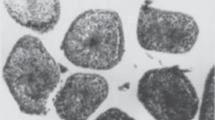Abstract
Over many years of field studies (1958–2017), we determined that, under the conditions of the northern periphery of the range, the rate of sexual maturation of bank vole juveniles depends on the calendar date of birth more than on the absolute age. It was noted that individuals can reproduce as early as 25–30 days after birth. The earlier the animals are born, the faster they grow and develop and the earlier they mature and begin to reproduce. It was established that males and females born later than June do not generally mature in the year of birth and reproduce only the next spring, after wintering, and although among them there are mature individuals (mainly July broods), their number does not exceed 21%. It was found that the rapidly developing underyearlings of early broods, almost without exception participating in reproduction in the year of birth, provide population growth by the fall of the current year, and those born in the second half of summer serve as a population reserve for the next breeding season. We registered the age-related differences in the quality of the population and a clear “distribution of responsibilities” between individual generations, which are quite labile and serve as one of the most important mechanisms of population regulation. It was also noted that the fertility of adult and breeding new females depends not only on the environmental conditions, but also on their numbers in spring.


Similar content being viewed by others
REFERENCES
Bujalsкa, G., Reproduction stabilizing elements in an island population of Clethrionomys glareolus (Schreber, 1780), Acta Theriol., 1970, vol. 15, pp. 24–31.
Coutis, R.R. and Rowlands, I.W., The reproductive cycle of the Skomer vole (Clethrionomys glareolus skomerensis), J. Zool., 1969, vol. 158, no. 1, pp. 76–84.
Ivanter, E.V., Populyatsionnaya ekologiya melkikh mlekopitayushchikh taezhnogo Severo-Zapada SSSR (Population Ecology of Small Mammals in the Taiga North-West of the USSR), Leningrad: Nauka, 1975.
Kaikusalo, A., Population turnover and wintering of the bank vole, Clethrionomys glareolus (Schreb.), in southern and central Finland, Ann. Zool. Fenn., 1972, vol. 9, no. 4, pp. 219–224.
Koshkina, T.V., Relationships between closely related species of small rodents and regulation of their abundance, in Fauna i ekologiya gryzunov (Fauna and Ecology of Rodents), Moscow: Mosk. O-vo Ispyt. Prir., 1967, no. 8, pp. 5–27.
Naumov, N.P., Ocherki sravnitel’noi ekologii myshevidnykh gryzunov (Essays on Comparative Ecology of Muroid Rodents), Moscow: Akad. Nauk SSSR, 1948.
Petrusewicz, K., Bujalska, G., Andrzejewski, R., and Gliwicz, J., Productivity processes in an island population of Clethrionomys glareolus, Ann. Zool. Fenn., 1971, vol. 8, no. 1, pp. 112–121.
Popov, V.A., Mlekopitayushchie Volzhsko-Kamskogo kraya (Essays on the Comparative Ecology of Muroid Rodents), Kazan: Gosizdat, 1960.
Shvarts, S.S., Breeding biology and age structure of populations of widespread species of voles in the Far North, in Materialy po faune Priobskogo Severa i ee ispol’zovaniyu (Materials on the Fauna of the Ob North and Its Use), Tyumen: Ural. Otd. Akad. Nauk SSSR, 1959, no. 1, pp. 239–254.
Shvarts, S.S., Puti prisposobleniya nazemnykh pozvonochnykh zhivotnykh k usloviyam sushchestvovaniya v Subarktike (Ways of Adaptation of Terrestrial Vertebrates to the Conditions of Existence in the Subarctic), vol. 1: Mlekopitayushchie (Mammals), Tr. Inst. Biol., Ural. Fil. Akad. Nauk SSSR, Sverdlovsk: Ural. Otd. Akad. Nauk SSSR, 1963, no. 33.
Shvarts, S.S., Ishchenko, V.G., Ovchinnikova, N.A., Olenev, V.G., Pokrovskii, A.V., and Pyastolova, O.A., Alternation of generations and lifespan of rodents, Zh. Obshch. Biol., 1964, vol. 25, no. 6, pp. 417–433.
Tupikova, N.V. and Konovalova, E.A., Reproduction and mortality of bank voles in the southern taiga forests of the Vyatka–Kama interfluve, in Fauna i ekologiya gryzunov (Fauna and Ecology of Rodents), Moscow: Mosk. Gos. Univ., 1971, no. 10, pp. 145–171.
Zejda, J., Differential growth of three cohorts of the bank vole, Cleihrionomys glareolus Schreb., Zook Listy, 1971, vol. 20, no. 3, pp. 229–245.
Funding
This work was carried out in accordance with a State Assignment of the Karelian Research Center, Russian Academy of Sciences.
Author information
Authors and Affiliations
Corresponding author
Ethics declarations
Conflict of interest. The author declares that he has no conflict of interest.
Statement on the welfare of animals. All applicable international, national, and/or institutional guidelines for the care and use of animals were followed.
Additional information
Translated by N. Smolina
Rights and permissions
About this article
Cite this article
Ivanter, E.V. Reproduction Ecology of the Bank Vole Myodes (Clethrionomys) glareolus Schreb. at the Northern Periphery of the Range: Communication 2. Sexual Maturation and Fertility of Adults and Juveniles. Biol Bull Russ Acad Sci 48, 224–237 (2021). https://doi.org/10.1134/S1062359021020060
Received:
Revised:
Accepted:
Published:
Issue Date:
DOI: https://doi.org/10.1134/S1062359021020060




